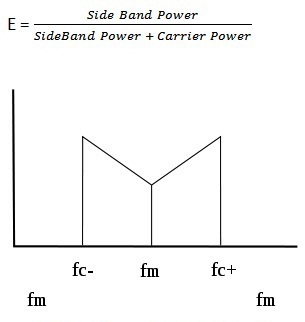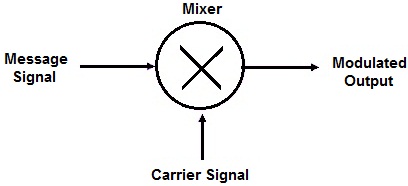Double-sideband suppressed-carrier Modulation transmission (DSB-SC):
Transmission in which
 |
Generation of DSB - SC
If the carrier amplitude is influenced in a multiplier with a message signal without DC offset, an amplitude modulation with suppressed carrier is generated. DSB - SC is generated by a mixer. This consists of a message signal combined with the frequency carrier.
 |
 |
 |
 |







